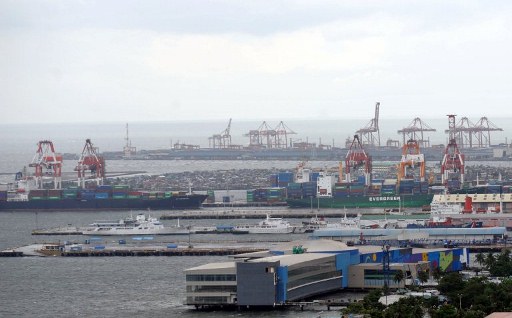Exports hit a new monthly record in October, thus narrowing the Philippines’ trade deficit to a 14-month low, although the cumulative deficit for the year approached a new annual high.
Preliminary data at the Philippine Statistics Authority show that in October, export receipts surged by 20 percent to $7.7 billion from $6.4 billion, 10 times as fast as the 2-percent growth recorded last year.
Meanwhile, imports grew by 7.5 percent to $11 billion from $10.4 billion, just a third as fast as the 23-percent jump in October 2021.
Thus, while the trade gap remained at the expense of the country, it decreased by 13.5 percent to $3.3 billion in October from $3.82 billion in the same month of 2021.
Still, the trade deficit for January-October ballooned by 54 percent to $49.98 billion from $32.4 billion in the same 10 months of last year, mainly due to the surge in fuel prices following Russia’s invasion of Ukraine.
Two-way traffic of goods in October was valued at $18.9 billion, an increase of 12 percent from $16.6 billion a year earlier.
“The marked narrowing of the [Philippines’ monthly] trade gap helped to account partially for the peso’s modest outperformance in recent weeks,” said Miguel Chanco, chief economist on emerging Asia at Pantheon Macroeconomics.
Seasonal factors
Chanco said, however, that seasonal factors have been “quite favorable” for exports since September.
He added that when adjusted for seasonality, the deficit showed a more modest narrowing to $3.7 billion in October from $4.9 billion in September.
Michael Ricafort, chief economist at Rizal Commercial Banking Corp., said the narrower trade deficit may be due to global crude oil prices decreasing to the extent that the increases caused by Russia’s invasion of Ukraine have been offset.
“The significant narrowing in the trade deficit data may have fundamentally helped stabilize and even improved the peso exchange rate,” which is now at the 55:$1 level from a record weakest position of 59:$1 in October, Ricafort said.
Even then, Ricafort said the 10-month deficit this year was already nearing the full-year record of $43.5 billion that was posted in 2018.
Chanco said the upswing in Philippine export growth will likely prove to be short-lived, judging by the ongoing and sharp deterioration in Korean exports —a barometer for the health of global trade—particularly in the key semiconductor industry.
Also, Chanco said the peso’s collapse through most of this year was finally starting to impinge substantially on import demand, noting that the October readout was the third month-on-month decline in four months.
“The latest decline [to $11 billion in October from $12 billion in September] had less to do with favorable commodity price movements [than with a drop in] purchases of capital and consumer goods,” Chanco said.
In October, electronic products were the biggest export earning commodity group, with $5.1 billion in receipts or two-thirds of total.
Completing the top three exports were “other mineral products” with $94 million (3.8 percent of month’s total) and “other manufactured goods” with $273.6 million (3.6 percent).
Electronic products were also the country’s top import with a value of $2.88 billion or 26.2 percent of the total bill in October.
These were followed by mineral fuels, lubricants, and related materials valued at $1.88 billion (157.1 percent of total); and transport equipment at $840.8 million (7.6 percent). INQ


